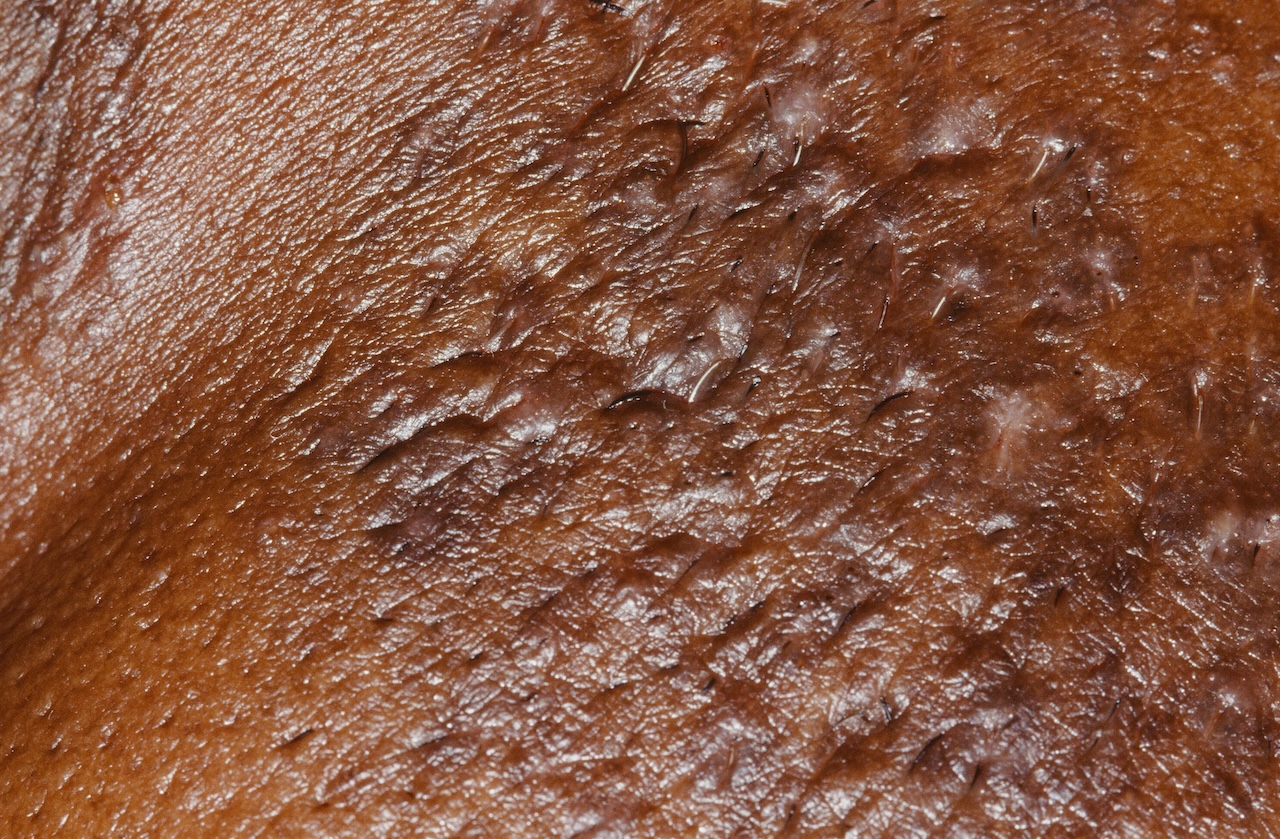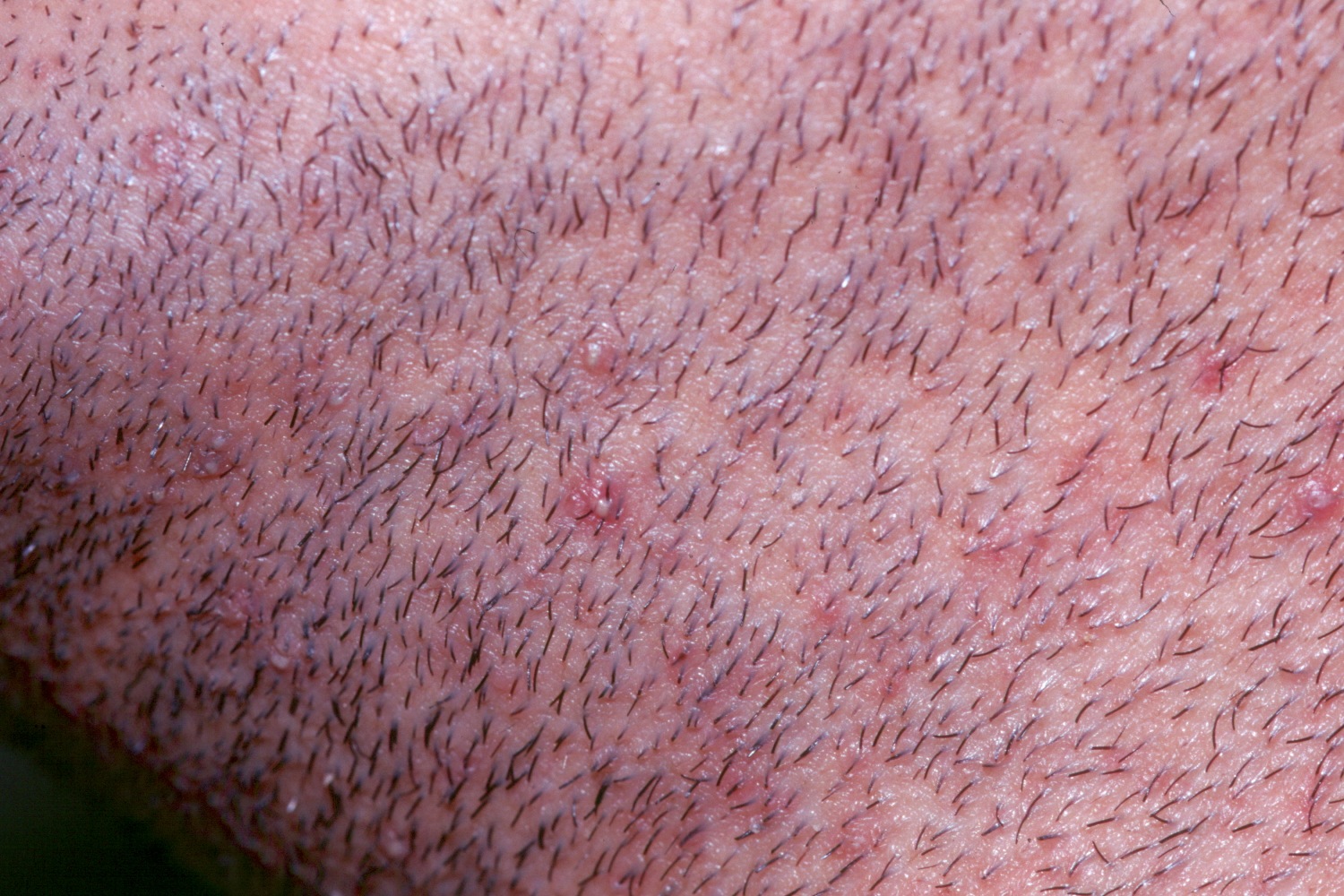 Multiple curved whiskers diggin into the skin in a Black man.
Multiple curved whiskers diggin into the skin in a Black man.
 Multiple curved whiskers diggin into the skin in a Black man.
Multiple curved whiskers diggin into the skin in a Black man.
Pseudofolliculitis barbae (PFB) is an inflammatory, acneiform and scarring process common in the beard area of darker-skinned men. It seems to be caused by short and recently shaved whiskers that curve back into the skin, causing a foreign body response.
The classic patient is a young black man who gets papules and pustules in the beard area. Close inspection shows a curled whisker associated with each lesion. Over time, scarred tracks develop with each whisker, making shaving even more difficult. Acne keloidalis nuchae is often associated.

This patient was unusually Caucasian

This woman with hirsutism constantly plucked ingrown hairs, inducing more ingrown hairs with scarring and a picture similar to PFB.
Homepage | FAQs | Contact Dr. White